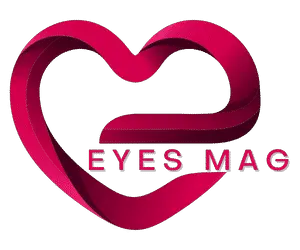Unknown facts about Norse god of healing, Egyptian god of healing & Goddess of healing
There are several fascinating facts regarding Norse mythology’s raven deity. Let us study more about Thor’s father, the great Norse deity, to understand his significance in Norse mythology. After that, learn about the Viking deity Thor and the importance of Aaron Burr.
NORSE LIFE HISTORY
Gods are split into two types in Norse mythology: aesir and Vanir. The aesir represents chaos and battle, whereas the Vanir represents nature and fertility. All gods fall into two groups in Norse mythology—Asgard, ruled by the Norse deity Odin. The kingdom of aesir is Asgard.
Odin is the all-father of gods, according to the other Norse gods. Borr and Jotunn Bestla have a kid named Odin. Odin is the son of Jotunn, a giantess. He wedded Frigg, the goddess. Odin had at least five sons from goddess Frigg and various women.
Thor, Odin’s first son, is the most renowned of his children. Joro, the earth goddess, gives birth to Odin’s firstborn son, Thor. Apart from Thor, Odin’s children are twin gods. Baldr and Hoor, the twin gods, were born to Goddess Frigg. Odin is the father of Vioara and Vali, the daughters of giantess Grier and Rinder. In Norse mythology, the trickster god Loki is not Thor’s adoptive brother or linked to Thor’s father Odin in any way.
Apart from children, Odin has several animals that he adores. He has two ravens as well as wolves. Hugin and Munin are the names of two ravens. Hugin and Munin, two ravens, travel across the globe and report to Odin. Odin’s wolves are known as Geri and Freki.
Sleipnir, Odin’s eight-legged steed, is well-known among Odin’s associates. This eight-legged horse is said to have the ability to travel across the globe. Odin is also pictured wearing a golden ring known as Draupnir, essential to Nordic gods. Freyja, a goddess, taught Odin the magical art of prophecy.
SIGNIFICANCE OF ODIN
There are battle maidens among the Norse gods called Valkyries. The hall of god Odin is spelled Woden in other languages. God Odin carried the severed head of Mimir along with him. The grand and majestic entrance of god Odin is the Valhalla and is a place for the slain warriors.
POWERS OF ODIN
He also received other magical abilities from the famous self-sacrifice made by god Odin for knowledge about the universe. God Odin is so good at the battle that his spear Spugnir is not known to have missed a single target in action. The sons of god Odin are no less when it comes to powers, either. As a war god, his battle powers are very famous. God Odin also learned prophecy from goddess Freyja.
THE TREE HUNG
Odin was killed by the giant wolf Fenrir. He hanged himself in an ash tree, symbolic of the cycle of life, death, and rebirth. Vidar, the son of Odin, survived the battle and later killed his father to avenge his death. Here at Kidadl, we have carefully created many interesting family-friendly facts for everyone to enjoy.
GODS OF HEALING
Taweret
Taweret, ‘the great female one,’ was composed of randomly selected animal parts. She has the body and head of a pregnant hippopotamus standing on its hind legs, the tail of a crocodile, and the limbs of a lioness – topped, occasionally, by a woman’s face.
The women of ancient Egypt regarded Taweret as a great comfort, as she was able to protect them during childbirth by scaring away evil spirits. The image displayed here on walls, beds, headrests, and cosmetic jars in many private homes, and she even appeared on palace walls.
Bes
Bes is a part-comical, part-sinister dwarf with a plump body, prominent breasts, bearded face, flat nose, and protruding tongue. He might be either fully human, half-human, half-animal (usually lion). He often wears a plumed headdress and carries either a drum, tambourine, or knife.
Neith
Neith is a warrior or a hunter. She is human-form and bald. She wears a crown and carries a bow and arrows. Her linen sheath dress is so tight that she would have had difficulty moving around the battlefield in an age before lycra. Her title ‘mother of the gods’ identifies her with the creative force present at the beginning of the world, and she may be credited with inventing childbirth.
The Aten
The Aten is a metaphysical, faceless sun that emits long rays tipped with tiny hands. Pharaoh Akhenaten (ruled c1352–1336 BC) abandoned the traditional gods and built a new capital city dedicated to the Aten. As he has no known mythology, we can say very little more about him.
Sekhmet
When angry, Hathor transforms into Sekhmet, ‘the powerful one,’ an uncompromising, fire-breathing lioness armed with an arsenal of pestilences and plagues and the ability to burn Egypt’s enemies with the fierce heat of the sun.
As ‘mistress of life’, she could cure all ills that she inflicted as’ mistress of life, ‘ and her priests were recognized as healers with powerful magic. When the sun god, Re, learned that the people of Egypt were plotting against him, he sent Sekhet to kill them all – and had a lot of trouble stopping the killing.
Geb
In ancient Egypt, Geb was an earth god who represented both the fertile land and the graves dug into that land. Later, Greek tradition would equate Geb with the Titan Chronos, who overthrew his father, Uranus, at the urging of his mother, Gaia. Geb represents the fertile earth as a reclining man beneath the female sky.
Renenutet
Renenutet was a cobra goddess associated with the fertility of the Nile. He wore a rearing cobra (the uraeus); cobra amulets in mummy wrapping to protect the dead. When angry or threatened, the Egyptian cobra can raise a third of its body from the ground and expand its ‘hood’ (cervical ribs).
Khepri
Khepri, ‘the one who comes into being,’ is the morning sun. He is usually shown as a beetle, although he might also be a beetle-headed man or a beetle-headed falcon. Khepri did not have a temple but was often depicted alongside Egypt’s other gods in the royal tombs in the Valley of the Kings. He is usually shown as a beetle, although he might also be a beetle-headed man or a beetle-headed falcon.
Conclusion
The underlying principle of Egyptian religion was known as heka (magic), personified in the god Heka. Heka was all-pervasive and all-encompassing, imbuing the Egyptians with magic and meaning and sustaining the principle of meat upon which life depended. The gods of ancient Egypt were seen as the lords of creation and custodians of order and familiar friends.



















